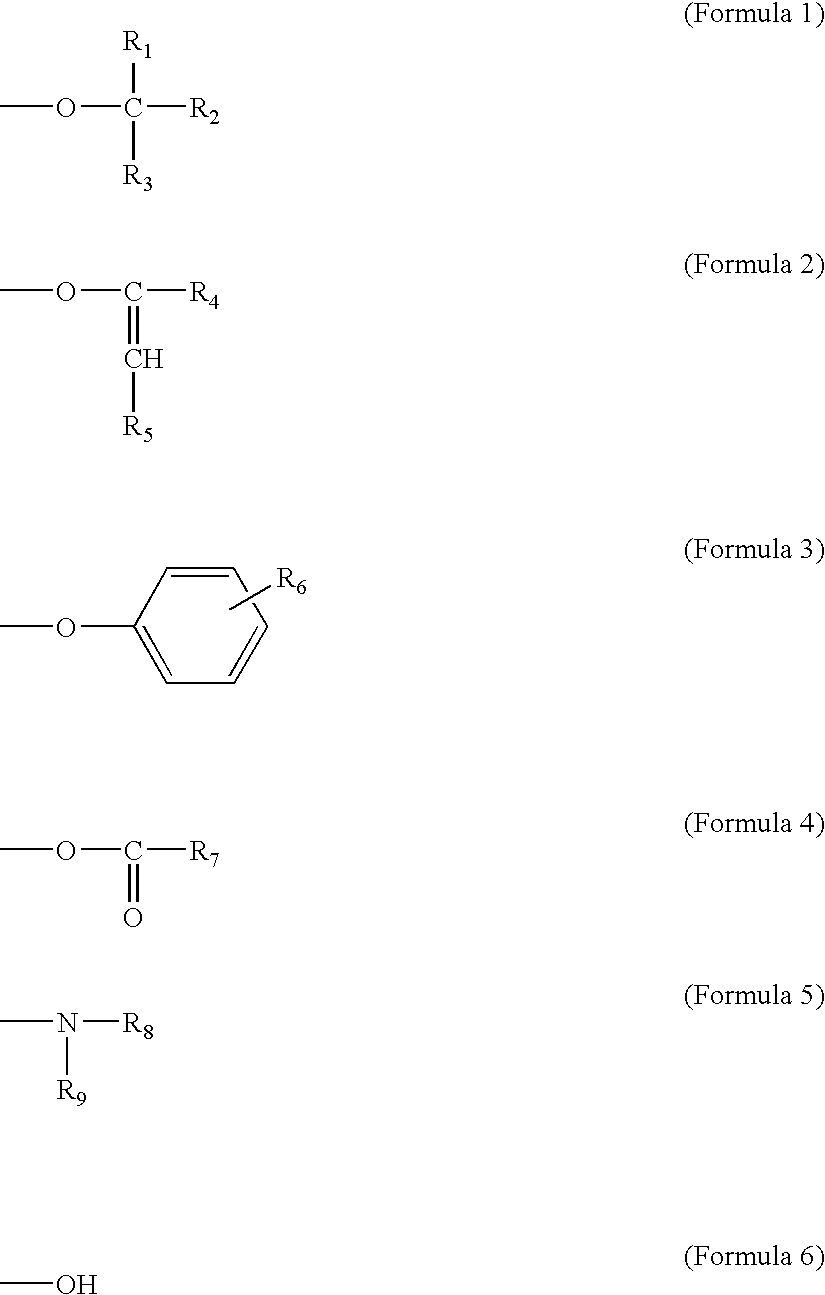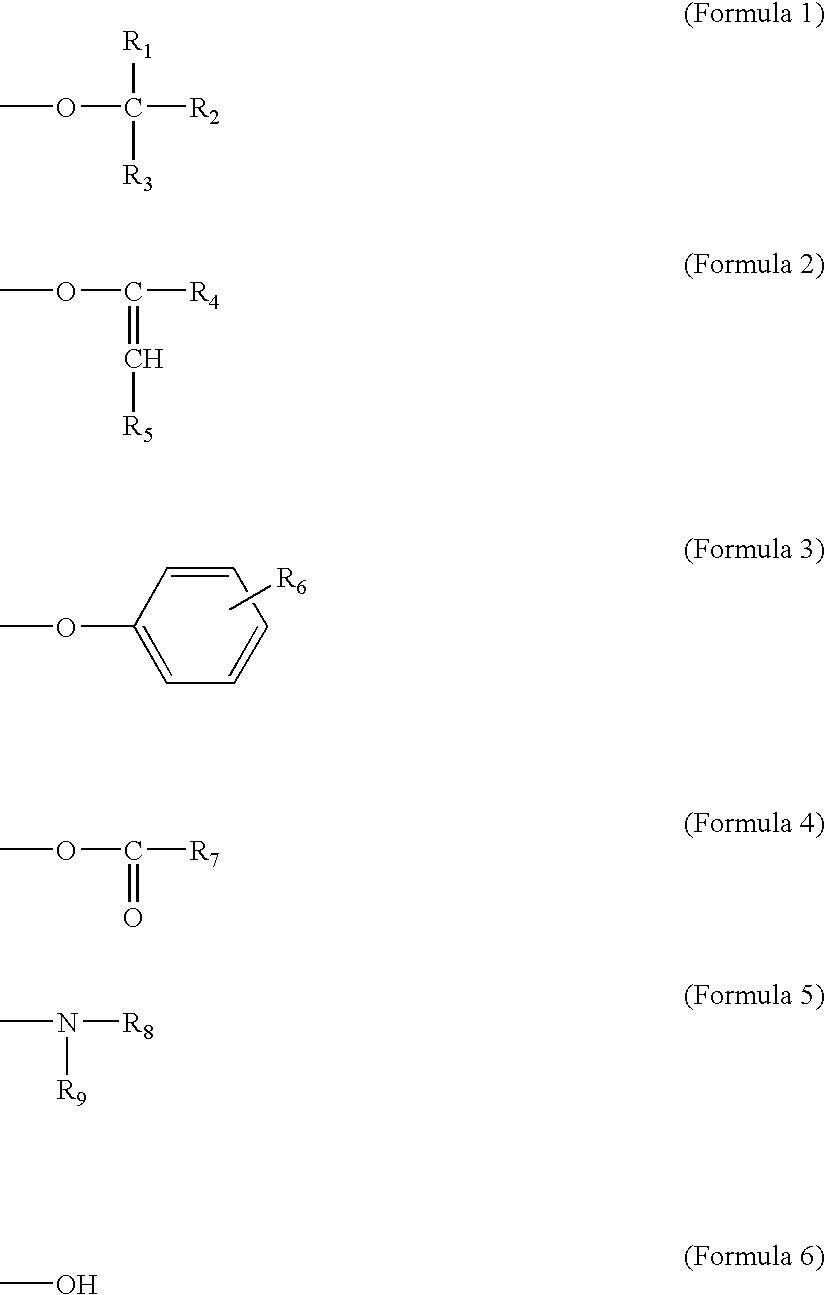Polyester resin compositions, catalyst for polyester production, polyester film, and magnetic recording medium
a technology of polyester film and composition, which is applied in the direction of synthetic resin layered products, magnetic recording, record information storage, etc., can solve the problems of increasing the filtration pressure at the filter, causing surface defects in films, and antimony-based compounds, and achieves excellent slidability and thermal stability. stability, satisfactory hue
- Summary
- Abstract
- Description
- Claims
- Application Information
AI Technical Summary
Benefits of technology
Problems solved by technology
Method used
Image
Examples
examples 15 to 19
, Reference Examples 1 to 3, and Comparative Examples 6 and 7
(2.1) Titanium Content, Phosphorus Content, and Antimony content in the polyester The contents were determined as in (1.1) above.
(2.2) Average Particle Diameter of Organic Polymer Particles
[0234] Determination was conducted by dynamic light scattering using PAR-III produced by Otsuka Electronics Co., Ltd.
(2.3) The Ratio of the Number of the Coarse Particles Having a Diameter at Least Twice the Average Diameter in the Organic Polymer Particles
(2.3.1) Measurement Using a Slurry
[0235] A slurry containing 20 wt % of organic polymer particles in water as medium was diluted 1,000-fold with deionized water, and the number of the coarse particles having a diameter at least twice the average diameter was counted using FPIA-2100 produced by Sysmex Corporation. The total weight of the particles were calculated based on the weight of the sample used for measurement and divided by the density of the organic polymer particles (...
example 1
(Ethylene Glycol Slurry of Colloidal Silica Particles)
[0256] To 40 parts by weight of ethyl alcohol, 4 parts by weight of saturated ammonia water was added, and 4 parts by weight of tetrapentylsilicon was added under stirring to prepare colloidal silica having an average particle diameter of 0.1 μm. Subsequently, 100 parts by weight of ethylene glycol was added, and the mixture was heated to distill away ethanol and water. Ethylene glycol slurry of colloidal silica was obtained as a result.
(Preparation of Polyethylene Terephthalate Resin Composition)
[0257] Into an esterification reactor preliminarily charged with about 120 parts by weight of bis(hydroxyethyl) terephthalate and kept at 250° C., an ethylene glycol slurry of terephthalic acid, the slurry containing 100 parts by weight of high-purity terephthalic acid and 43 parts by weight of ethylene glycol, was continuously fed over four hours. Upon termination of the feeding, esterification reaction was continued for 1 hour whi...
examples 2 to 4
[0267] A polyethylene terephthalate resin composition, a film, and a magnetic tape were prepared as in EXAMPLE 1 except that the type and the amount of titanium catalyst, the type and the amount of the alkaline earth metal compound (in EXAMPLE 2, magnesium acetate tetrahydrate as in EXAMPLE 1, and in EXAMPLE 4, calcium acetate monohydrate were used), and the amount of the ethyl diethylphosphonoacetate were changed.
PUM
| Property | Measurement | Unit |
|---|---|---|
| molar ratio | aaaaa | aaaaa |
| specific volume resistivity | aaaaa | aaaaa |
| average particle diameter | aaaaa | aaaaa |
Abstract
Description
Claims
Application Information
 Login to View More
Login to View More - R&D
- Intellectual Property
- Life Sciences
- Materials
- Tech Scout
- Unparalleled Data Quality
- Higher Quality Content
- 60% Fewer Hallucinations
Browse by: Latest US Patents, China's latest patents, Technical Efficacy Thesaurus, Application Domain, Technology Topic, Popular Technical Reports.
© 2025 PatSnap. All rights reserved.Legal|Privacy policy|Modern Slavery Act Transparency Statement|Sitemap|About US| Contact US: help@patsnap.com



